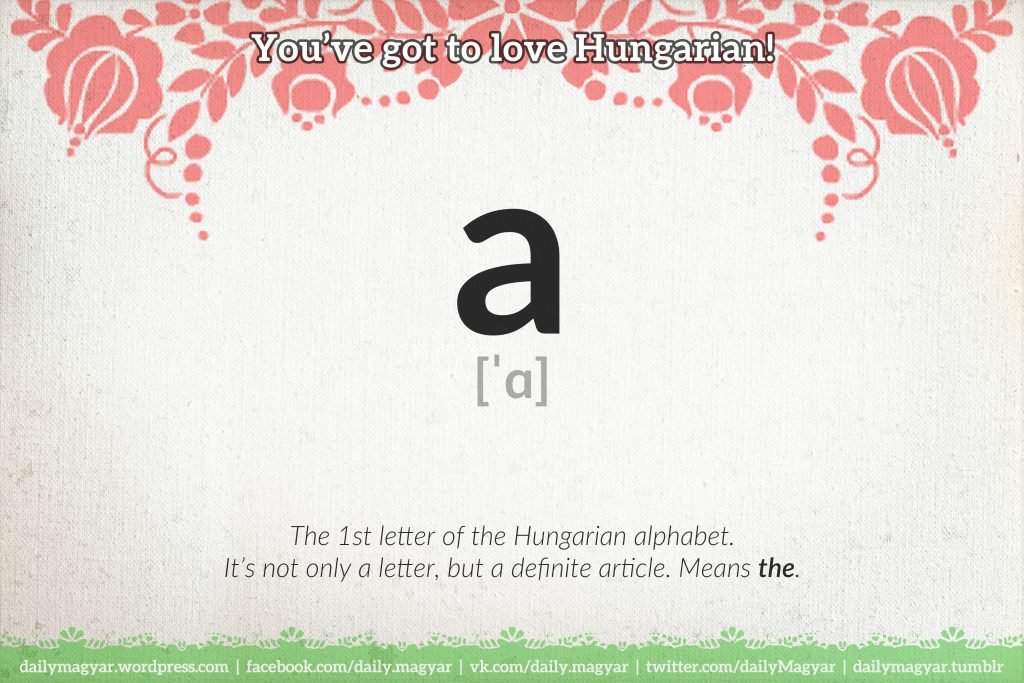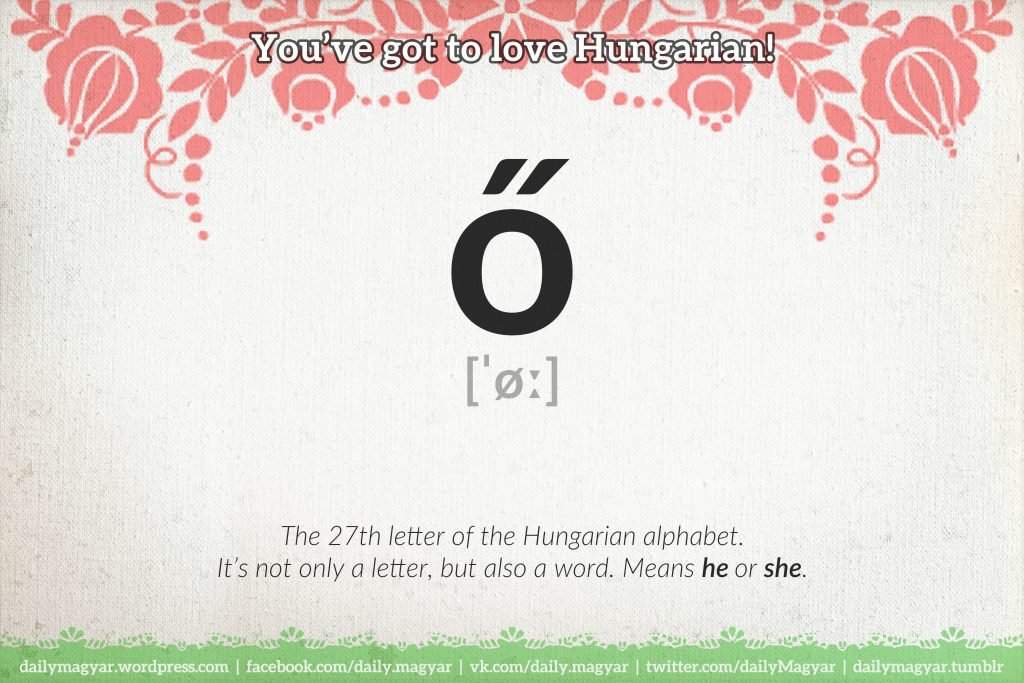Mini language lesson #4: The Hungarian alphabet

Have you ever tried to engage in the Hungarian alphabet, but gave up when you got to ‘dz’ and ‘dzs’? Have you ever tried to pronounce ‘gy’, ‘ny’, ‘ty’, but they just didn’t seem to sound right? Well, our alphabet can seem as tricky as our language on the whole, but we are here to bring you some fun facts and learning cards that might help you 🙂
Keep in mind that we are not linguists in any way, we’re just as dazzled by the curiosities of the Hungarian language as foreigners are. So this series doesn’t aim to explain the etymology of words, it’s more of a fun take on our language. We try to bring Hungarian closer to you with witty learning cards made by Daily magyar, a language-enthusiast person, whose posts give an insight into the complexity of the Hungarian grammar. But don’t worry, it’s all done in an easy-going way, so that it can make learning fun.
Let’s focus on the Hungarian alphabet now. You’re most likely to get in touch with it early on if you start learning the language. We have 44 letters, which might seem like a lot at first, but you’ll understand more or less how they work with time.
A fundamental characteristic is that we express consonants that don’t exist in the Latin alphabet with the combination of several letters of the Latin alphabet, while some of our vowels have diacritic versions. Something that poses a problem to foreigners is that we have unique double letters with special pronunciation. For instance, in some cases, the letter ‘y’ is added to ‘g’, ‘l’, ‘n’ and ‘t’, thus softening the pronunciation. Another letter that has a modifier role is ‘s’, which is added to ‘c’ and ‘z’.
abc; abécé – alphabet
betűrend
1) alphabet
2) alphabetical order
[Literally: letter-order]
betűrendi – alphabetic; alphabetical
betűrendes – alphabetic; alphabetical
betűrendben – alphabetically
betűrendbe szedni – to alphabetize
betű – letter; character
rend
1) order; sort
2) rank; rate
This video will help you with the pronunciation of our letters:
https://www.youtube.com/watch?v=JwtwZTRDvYI
Something else that you might find weird is that we have vowels that no other languages have. Some of our vowels have accents, which can make big differences in the meaning of words, so you should try to remember them, otherwise you might end up in funny situations.

The next photo demonstrates the difference between front/high vowels and back/low vowels, which is the basic grouping of Hungarian vowels:

You should pay special attention to four letters, which also function as independent words in the Hungarian language. Take a look at them:


It’s not exactly pronounced as a long ö [ˈø], it is a deeper sound.


For example: Tetszik nekem e lány. = Tetszik nekem eme lány. = Tetszik nekem ez a lány. – I find this girl attractive. (The first two Hungarian sentences are rather poetic, than normal everyday language.)
There’s also a fun Hungarian language game called Eszperente, which is built on solely one vowel, ‘e’. Trying to speak Eszperente can be an entertaining game with friends and family. However, keep in mind that it is not the same as the Esperanto language, even though they have similar names.

Finally, we should take a glance at the history, development of the Hungarian alphabet. For instance, did you know that the oldest Hungarian words using the Latin script were found in the establishing charter of the Abbey of Tihany? And most importantly, did you know that our ancestors used to write with the Old-Hungarian script until the 11th century?
The Old Hungarian script is also known as Hungarian Runes or Székely-Hungarian Rovás. The word “rovás” derives from the verb “róni” (carving letters). It’s a Hungarian terminology which describes the technique of writing.
Those who used “rovás” usually wrote on wooden sticks or rocks in ancient times. The runic alphabet includes 42 letters, but it does not contain letters like “dz, dzs, q, w, y”, since these letters are rarely used in the Hungarian language. The letters of the runes have a squared form because it is easier to jot them down than to carve arched ones. Interestingly, the runic writing was written from the direction right to left – just like in the Arabic alphabet – because it was a lot easier to take the stick in the left hand and to write the text from the right side to the left. You can read more about rovásírás here.

We hope you enjoyed this little introduction to the Hungarian alphabet. Listen to the video, practice the pronunciation and you’ll might even find that you’ve become the master of Hungarian letters 😉 And remember: you’re not alone!
Photos: www.facebook.com/Dailymagyar
ce: bm
Source: Daily News Hungary





